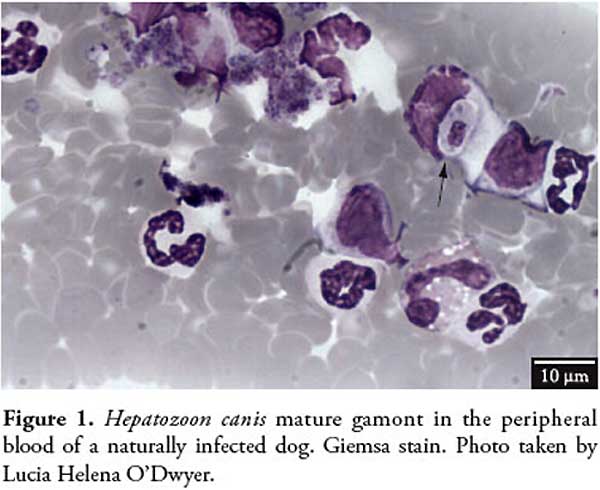File:Canine hepatozoonosis.jpg
Canine_hepatozoonosis.jpg (600 × 490 pixels, file size: 34 KB, MIME type: image/jpeg)
Canine Hepatozoonosis
The genus Hepatozoon includes hundreds of species that infect birds, reptiles, amphibians and mammals, in all continents with tropical and subtropical climates.
Hepatozoon canis was first described in the early 1900s.
Two species have been described in domestic dogs: H. canis, reported in Europe, Asia, Africa, South America and the United States; and H. americanum, which so far has only been diagnosed in the United States. In Brazil, the only species found infecting dogs is H. canis. The objective of this review was to detail some aspects of canine hepatozoonosis, caused by H. canis, and the main points of its biology, transmission, pathogenicity, symptoms, epidemiology and diagnostic methods, with emphasis on research developed in Brazil.
Reference
<pubmed>21961746</pubmed>| Rev Bras Parasitol Vet.
Attribution — You must attribute the work in the manner specified by the author or licensor (but not in any way that suggests that they endorse you or your use of the work).
Noncommercial — You may not use this work for commercial purposes.
File history
Click on a date/time to view the file as it appeared at that time.
| Date/Time | Thumbnail | Dimensions | User | Comment | |
|---|---|---|---|---|---|
| current | 08:21, 5 April 2012 |  | 600 × 490 (34 KB) | Z8600021 (talk | contribs) | The genus Hepatozoon includes hundreds of species that infect birds, reptiles, amphibians and mammals, in all continents with tropical and subtropical climates. Two species have been described in domestic dogs: H. canis, reported in Europe, Asia, Africa, |
You cannot overwrite this file.
File usage
The following 2 pages use this file:
